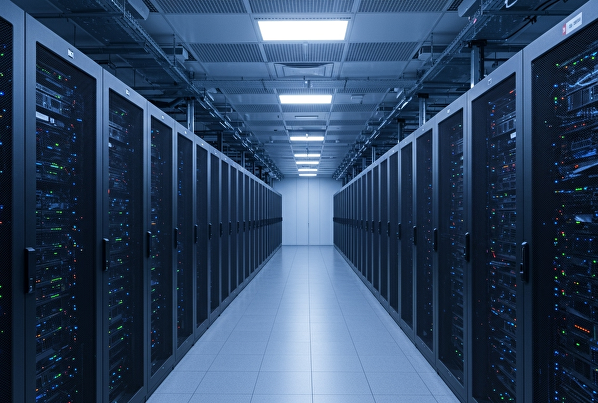
- You are here:
- Home
- News & Insights
- Should I stay or Should I go?
Should I stay or Should I go?

Challenging the choice between ‘Stay or leave my On-premises datacenter?'
Yesterday Datacenter United was present at IT infrastructure @the Montil in Affligem. The gathering brought together specialists from the Belgian data center industry. Our Chief Commercial Officer (CCO) shared insightful perspectives as a keynote speaker at the event.
DO YOU ASK YOURSELF THESE QUESTIONS ?
👉 How critical is my IT infrastructure and is your datacenter part of your organization's core business ?
👉 Building is Capital intensive, can I use my Capex for other business needs?
👉 Does my company have the right skills and knowledge to build, maintain and ensure the long-term business continuity of my IT infrastructure?
👉 Will your datacenter be innovative and future proof?
👉 Did you make the exercise to see what advantages could bring the externalization to a professional colocation partner (security, certification, energy efficiency, sustainability,... )?
👉 How important is "peace of mind" for your company, teams, partners and customers?
👉 Can I scale if needed (one-size-fits-all principle)?
In the past a lot of companies in their early digitization phases built an on-Prem datacenter or data room. IT was seen as mandatory to be physical at the corner of the organization and mostly in a centralized model where all data was gathered in one place or in the best case two separated environments for Disaster recovery or Back-up purposes.
Experiencing some growth of data storage and processing with the years is typically a thrilling phase for any organization. However, swift expansion often uncovers critical deficiencies in the existing on-site infrastructure. The technological framework that served the company well in its early stages has become inadequate for propelling it to the next level of their digital transformation journey or digitalization. Without promptly implementing the necessary measures to facilitate more efficient scalability, the organization might discover that its growth momentum comes to an abrupt halt.
While on-premises data centers may have once been the conventional mode of deploying IT resources and applications, contemporary companies now enjoy a broader spectrum of options. Colocation data centers and public cloud platforms present a compelling alternative for organizations with limited capital resources to construct and sustain their own facilities. Even sizable enterprises that have long relied on an on-premises data center are now exploring different avenues as they embark on their digital transformation journey. Where IT and digitalization is now key in a lot of industries, this could impact barely the time to market and go to market strategy.
Therefore it’s always good to answer the question: Is my infrastructure critical to ensure my business continuity and provide the best employee and user/customer experience?
Another aspect to take in consideration will be the cost of built/maintain the existing datacenter, data room to keep it “state-of-the-art” and future proof.
Maintaining your on-premises IT infrastructure can become a bottleneck and is often underestimated. Cost of cooling, power, security, fire suppression systems, NOC systems and DCIM software need to be estimated and compared to the Colocation pricing model linked to the “peace of mind” principle.
On top of that, you need to keep a dedicated IT personnel on staff to troubleshoot all issues you could have on technical and facility level. You can then migrate CapEX to an OpEx model and or chose for a Hybrid distribution of your IT infrastructure. There are reasons to stay if the investments are acceptable to continue operating on-premises or that the core business of the company allows the use of some share personnel that’s competent on HVAC, Power distribution and security systems and technologies. Cost of “Lift and shift” needs also to be taken into account.
The major question today isn't, should I Stay or should I Go; the main question is how could we as an organization benefit from the best of all the technologies or data distributed models. Therefore Private cloud or Public Cloud providers can often play a major role in scalability and investing in future proof solutions and facilities, allowing the company to concentrate on its core business. On connectivity level, the huge amount of telecom companies present in those data centers will also bring more agility, security (redundancy and hopefully cost reduction).
Using colocation data centers will ensure the company to cover the compliance aspects and regulation such as upcoming new compliance needs and new regulation. The Tiering certificates, ISO, PCI DSS, SOC2, NIS2 are just an example of the peace of mind this brings to the company and its suppliers and customers. (back to back ue)
When it comes to sustainability, the colocation data centers VS on-premises are inherently more efficient. This is not surprising, given the continuous investments made to stay efficient and innovative as it’s their core business and financial model. The Climate Neutral Pact and EU Green deal are regulating the sector where more and more effort will be asked on IT infrastructure level in the coming years. The effort on PUE and WUE for example wil need a lot of new technologies and ways of sourcing energy, where the main on-premises data centers will not be compliant or will need massive investments to comply.
Investing today for tomorrow is the reason to be of colocation data centers and provide the companies a future proof and reliable partner to sustain their growth.
Xavier Warnier: The sustainability theme has moved beyond the concept of greenwashing. Until recently, it was still part of the marketing strategy of many companies. At Datacenter United, sustainability is ingrained in our DNA. For instance, we have long been working with energy-efficient solutions and green power. Efficiency and operational excellence should not be an end in themselves. Since 2010, we have installed 2,500 solar panels and recently made an investment of 600 extra solar panels in Antwerpen Tier IV Facility that brings us to a total available 700MWh of own produced energy on a yearly base.
Sustainability does bring a number of challenges. Technically, data centers are evolving towards ever denser IT capacities, requiring more computing power in a smaller area. This is a positive evolution in terms of resource use and it also allows us to evolve towards more efficient cooling and more efficient use of space. Traditional on-prem data centers are not equipped for this in terms of energy supply. Spread over 9 locations we also play a big role in reducing our customers CO2 emissions, linked to short distance to the nearest datacenter. This has an impact on both mobility and connectivity, where the information/data is transferred on short distances.
To conclude, it’s not a black or white decision to Stay or Leave. Companies looking to maintain their existing On-premises or build a new one, should take in account several parameters to make the right decision. At Datacenter United we work with our customers on a transparent base where we could assess your datacenter and challenge your Digital Transformation journey.
Feel free to contact us and download our migration documentation as the DECK of the presentation at the IT Infra seminar hereunder.
Contact us for more information:
+32 3 369 36 90
hello@datacenterunited.com


